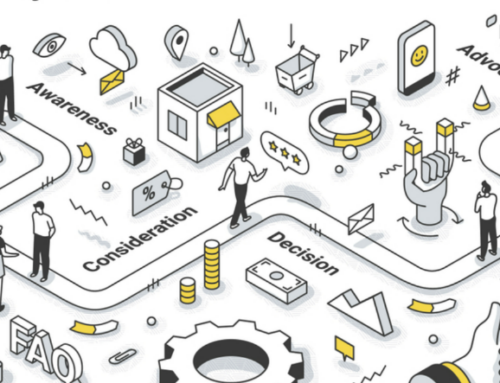About the author
Understanding a technology impact on a business can be challenging nowadays, especially for C-level executives. Being in charge of making a tough decision about buying a tech solution for the bank is as challenging as never before.
Too many offered solutions, options, and technologies that C-level executives should understand in order to choose the right solution which can bring the best value long term (and ROI) is what makes the decision tough.
Today, we will try to help you understand one of the crucial parts of the technology aspect that C-level executives should get familiar with – a microservice architecture.
Why do banks talk about microservice solutions?
The fact is that business evolves almost daily and that this decade brought businesses more changes than the previous twenty years – as part of the 3rd industrial revolution – and with changes came the challenge of maintenance of IT infrastructure and systems that become monolithic “giants”.
Over time it becomes harder and harder to understand, update and upgrade systems that act as monolithic solutions, and ultimately this led to the situation where change is a must if banks would like to have fast go to market adoption – as these changes are mainly pushed by the market needs that are growing exponentially in almost every aspect of the banking business – from the communication (that become omnichannel) to the core banking services such as account opening, etc.
But the complications mentioned above can be avoided efficiently and this is the moment when banks start talking about microservice-based solutions which we will talk about more.
What is microservice architecture?
Microservice architecture is an IT architectural style that structures an application as a collection of (micro) services that are fully independent but also highly maintainable as a group.
The core characteristic of microservice architecture is that it enables fast and reliable delivery of complex applications and large-scale software.
How do banks benefit from microservices?
Microservices have become hugely popular among banks in recent years.
The reason why this is a case is because of a couple of super important benefits that are heavily beneficial for the banks in the era of digitalization.
If we would need to point out one main benefit why this is a case, we would say that most certainly it is because banks can develop and deploy each microservice on a different platform, using different programming languages and developer tools allowing them to interact with each other over API, which brings time to market utilization as effective as possible.
The second biggest benefit microservices architecture brings is that teams can develop, maintain, and deploy each microservice independently which leads to other benefits such as scalability and freedom to scale applications separately whenever it is needed.
Top 5 benefits microservices architecture bring to banks
There are many benefits banks can get from using microservice architecture and here we will mention Top 5 we believe are the most important ones:
1. There is a bug that can stop the operations? No worries about that.
Imagining you have a system bug that can block your bank’s operations from day-to-day tasks leaves you most certainly non-conformable, directly losing money as a bank.
That is why one of the best benefits you can get from implementing microservices architecture is that your system doesn’t stop working just because there is a bug or a newly deployed feature that has to be updated.
The idea of distributing specific functions to separately deployed (micro)services is to give developers better chances of isolating the problem as fast as possible and solving it without causing problems with other parts of the system – and this is exactly what enables you to run operations smoothly without worrying your entire business will stop.
Another advantage of microservice architecture, in this case, is that after solving the bug or an issue, there is no need to deploy the whole application, developers can just update the isolated service that had a problem.
2. Fast time to market and fewer headaches about maintenance
When we speak to banking C level executives one of the main KPIs they tell as-is out of the most important for them is – time to market.
Being able to deliver new features and a solution fast becomes an ultimate strategic goal of a modern bank as implementing different business requirements and different services that customer needs fast is a game-changer for the banking industry.
And the second most important thing is that while scaling the solutions, banks do not scale costs of maintenance.
This is why one of the business benefits microservices architecture brings to the banks is that this approach includes less energy spent on understanding separate pieces of software and less sweat & worrying about how the latest bug-fix will affect other parts of the product which ultimately led to fewer maintenance troubles & costs.
3. Sky is the limit eg. easiness to scale
The superpower of microservice architecture is the ability to scale horizontally at any time.
In other words, this means that banks can easily duplicate deployed services, which, in turn, can be a game-changer when dealing with performance issues that block scalability.
A second huge benefit of microservice architecture that makes it easy to scale is the option to develop microservices in different programming languages/different technologies, which results in a system that is scalable and flexible.
And the third benefit of microservice architecture for banks is that it makes it easy to integrate different components without affecting the rest of the software.
4. Simplified security monitoring
As with isolating bugs, the microservice architecture allows you to easily isolate various parts of the application which makes it significantly easier to actively monitor and solve potential security issues.
Also, one of the benefits is that – since security problems could happen in one part of the system – you could be solving security issues at one part of the system without affecting other parts of the application.
5. Reusability
If we are talking about why choosing a microservice architecture is a business decision, reusability is the answer.
Another advantage of making components independent/microservice-based, and as self-containing as possible, is that you can reuse either internally or externally as a service.
This is what makes microservice architecture economically attractive.
Conclusion
As we just saw, microservice architecture is not just a “tech thing” but a strategical and business decision that influences banks’ future in many aspects – from bank’s internal process optimization to external client-oriented communication. That is why in the decision-making process of choosing the right solution for the bank, selecting the solution that is developed based on the microservice architecture becomes (almost) the must if a bank would like to be able to scale features that would be beneficial for their customers.






